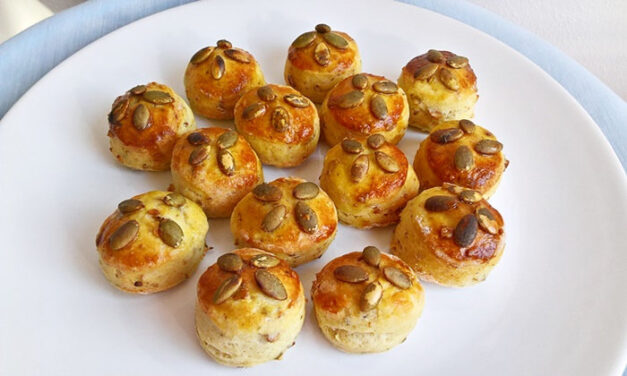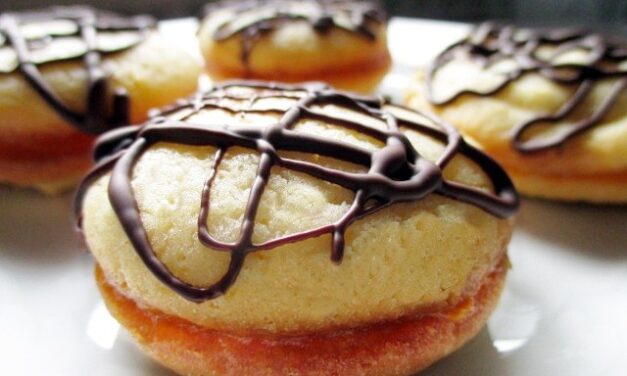Leftover Easter ham usually gives plenty to think about, its using up usually puts your creativity to the test. This year I ground the leftover cooked, smoked ham, divided into 100 g/3,5 oz portions and I put them in the freezer. Last week a bag of ham got into my hands and I thought scones would be a good base to serve ham in a different way.
I prepared a yeast butter dough and let it rise in the fridge overnight. The ham was seasoned with sautéed scallions because these bright color vegetables are now growing in our garden, and I wanted a hit of less-intense onion flavor. I folded the dough with the so called simple-double folding technique, so scones became light and flaky.

Scones are generally cut out from a 2-3 cm / 1 inch thick dough, so you may wonder why the dough has to be rolled out only 1 cm / 1/3 inch thick in this case. The reason lies in the buttery, laminated structure of the dough, which triples in size during baking. If you cut out thicker and smaller scones, the layers will slide and slope, and scones will look like the leaning tower of Pisa.



















2 Comments